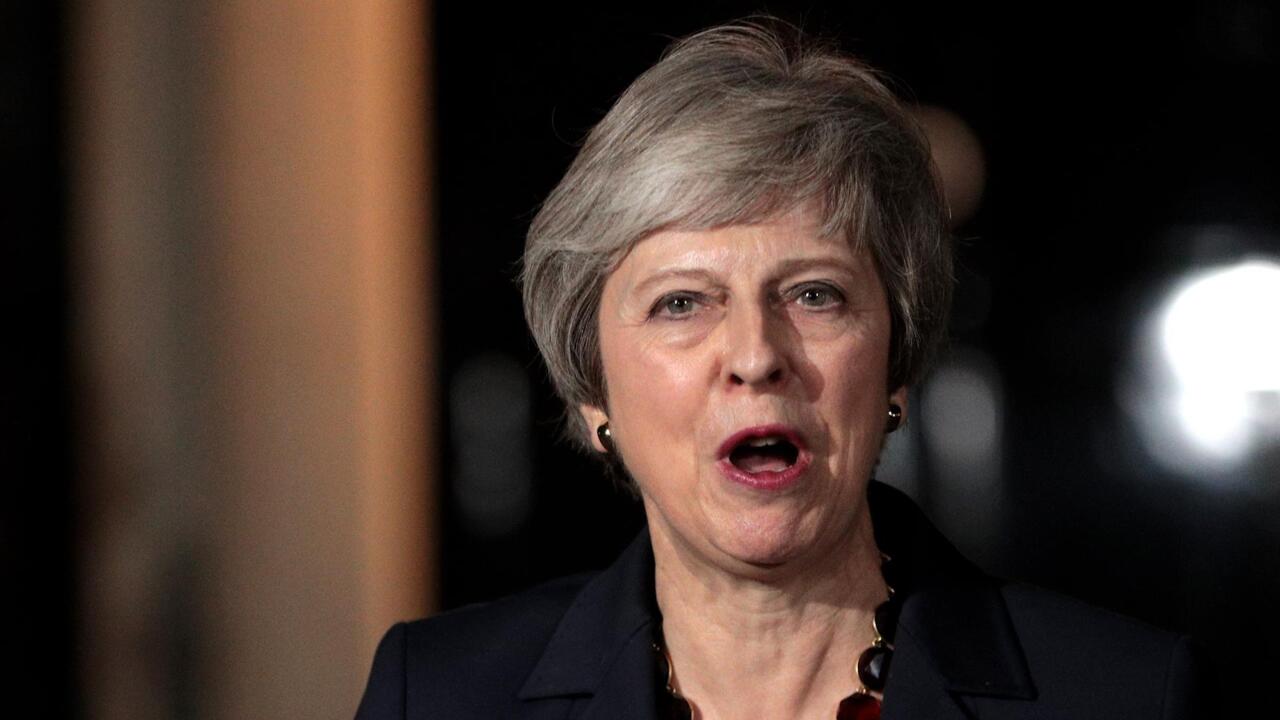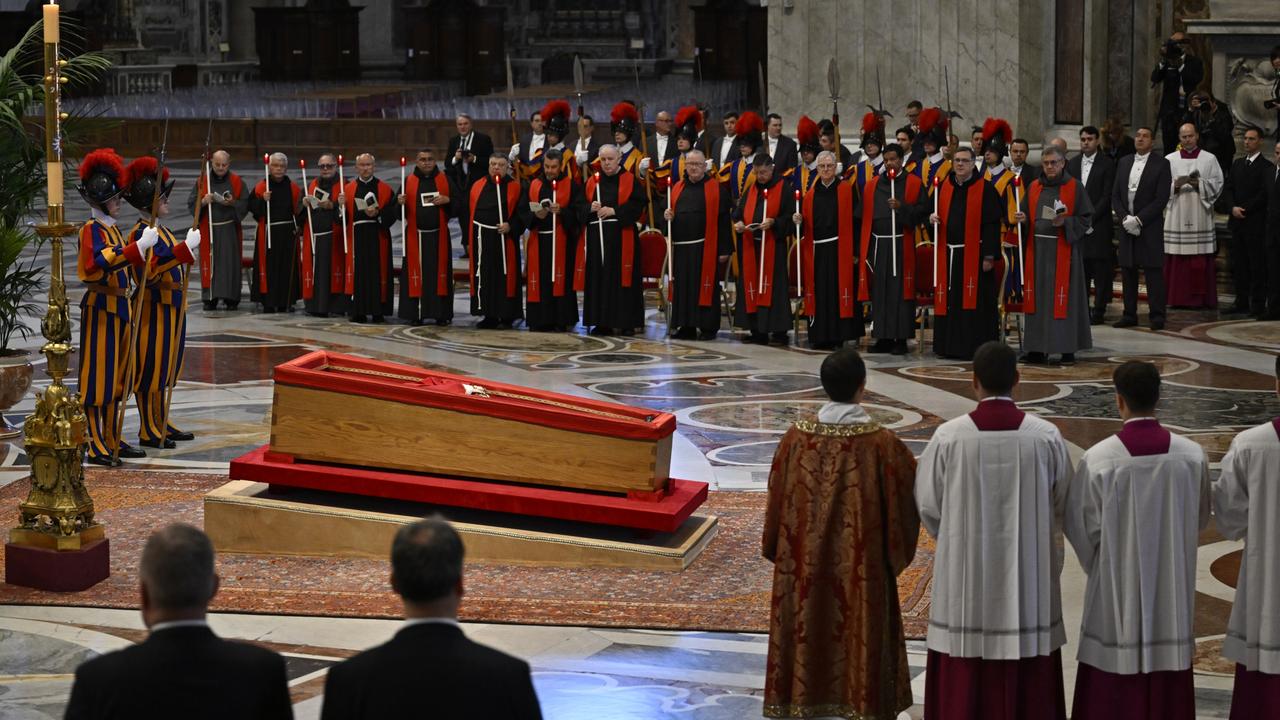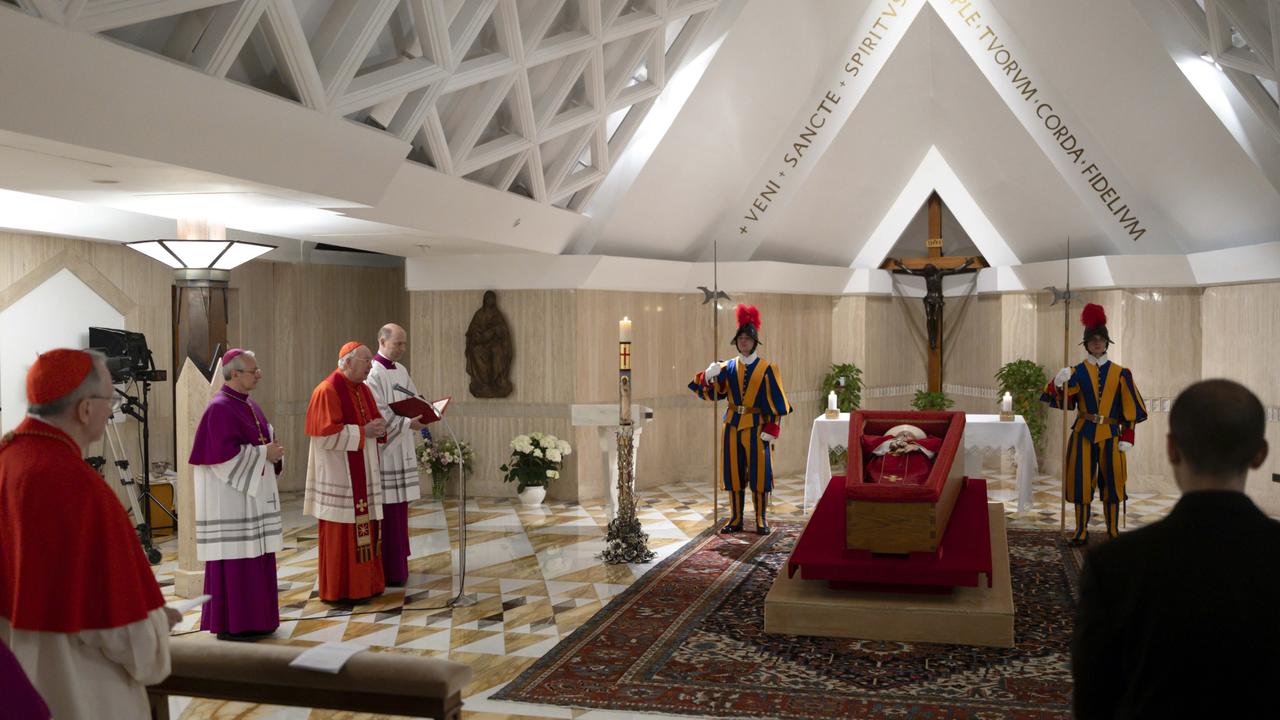Theresa May’s Cabinet backs her Brexit plan at marathon emergency meeting
Theresa May’s Cabinet has endorsed her Brexit plan but she could still face an imminent leadership challenge.

British prime minister Theresa May has successfully forced through the highly controversial Brexit Withdrawal bill at a marathon emergency meeting of her Cabinet but could face an imminent challenge to her leadership.
Mrs May acknowledged “there will be difficult days ahead and the Withdrawal bill will be under intense scrutiny’’. But she added “the choice was this deal to take back control to build a brighter future for a our country or go back to square one and bring uncertainty’’.
Mrs May described the choices as being the best of three: to take this deal, or to leave with no deal, or leave with no Brexit at all.
“I firmly believe this draft is the best that could be negotiated: the choice before us was difficult particularly in relation to the Northern Ireland backstop,’’ she said.
“This is a decisive step which enables us to move on and finalise the deal in the days ahead, these decisions were not taken lightly but it is a decision firmly in the national interest.’’
But the Tory party appears to be organising a vote of no confidence in Mrs May, which could be triggered as early as Thursday after she presents details of the draft deal to Westminster. Forty-eight letters from disgruntled MP’s are required for the party chairman to organise a leadership vote.
It has emerged that 10 of the 29 ministers in the Cabinet objected to the draft, but have now taken collective responsibility for the decision.
Mrs May is now under significant pressure to try and get the deal over the line in a parliamentary vote after convincing some Cabinet colleagues not to resign.
She will need at least 318 votes in the Commons but analysts say she can only rely on about 230 votes.
Both the DUP, which bolsters the Conservative’s numbers to rule, and 13 Scottish Conservatives are incandescent about the planned deal.
Mrs May has spent nearly two years arguing that a no deal was better than a bad deal, but many believe she has manouvred the UK into a bad deal and is arguing that it is better than a no deal.
DUP leader Arlene Foster warned Mrs May there will be consequences if she pushes her plan through.
“It’s a question of whether we’re separating the union — whether we are dealing with the United Kingdom in a way that leaves us adrift in the future.
“As the leader of unionism in Northern Ireland I’m not about to agree to that.’’
The EU chief negotiator Michel Barnier said the deal involved a soft Irish border but conceded Northern Ireland will be subject to more single market rules than the rest of the UK.
He said: “In the backstop scenario we agree to create the EU — UK single customs territory. Northern Ireland will remain in this same customs territory.
“In addition, Northern Ireland will remain aligned to those rules in the single market which avoids a hard border. This concerns agricultural goods as well as all products.’’
In addition the UK would not be able to leave the Irish backstop unilaterally and the UK will have to notify a joint committee and have the EU agree too.
Significantly, the Scottish secretary David Mundell has signed a letter warning against giving away fishing rights to the EU.
The Cabinet meeting was pushed out from the scheduled two hours to five hours, indicating the difficulties of the text, which has broken several “red lines’’ originally laid out by the prime minister.
The withdrawal deal has still been described as “a shambolic mess’’, “a capitulation’’ and “bungled’’ and has attracted criticism from Remainers and Brexiteers from across the entire political spectrum. The key issues — of the Irish border and the sovereignty of British laws — that have dogged negotiations between the EU and the UK over nearly two years continue to rankle with critics.
The draft sets out a regulatory alignment in order to avoid a hard border in Ireland but the UK has agreed to be mindful of the single market rules that will apply when the Irish border is crossed north to south.
The deal also allows for the European Court of Justice and the European Commission to have jurisdiction in the UK across a range of rules relating to EU customs, technical regulations, VAT and excise, agriculture and the environment, single electricity market and state aid. Where there is an issue regarding EU law, it cannot be referred to the arbitration panel, but must be decided by the European Court of Justice. During the transition period the ECJ will also maintain its jurisdiction over British laws.
Mr Barnier said: “This agreement is a decisive and crucial step in concluding these negotiations.’’
“We have reached a crucial stage, an important moment in this extraordinary negotiation, which we entered into at the request of the United Kingdom.
“There is still a lot of work...the path is still long and may well be difficult to guarantee an orderly withdrawal beyond the ordinary withdrawal, beyond the ordinary separation, to build something — to build an ambitious and sustainable partnership with the United Kingdom.
“There is still work to be done.’’





To join the conversation, please log in. Don't have an account? Register
Join the conversation, you are commenting as Logout